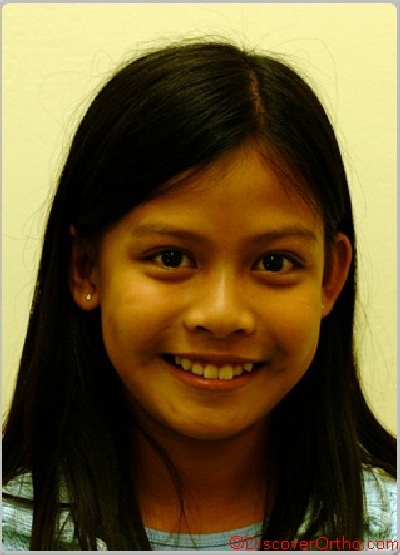






Facial Exam
Facial Type
Looking at the patient’s head from the front, classify the facial type. This determination is important because, some facial types are associated to more complex malocclusions than others.
The three main facial types are:
Brachycephalic
The brachycephalic facial type, characterized by a short and wide face, usually presents a flat mandibular plane angle and a closed gonial angle. A deep bite is frequently associated with this facial type. A good example of brachycephalic facial type is the Cl II division 2 malocclusion.
Normocephalic
The normocephalic facial type will tend to be associated to normally positioned bony bases in the three dimensions of space. If a malocclusion is present, its etiological factors will generally be more dento-alveolar in nature and usually require less complex orthodontic treatment. This facial type is the result of harmonious closure of the cranial sutures in the three dimensions of space.
Dolychocephalic
A long and narrow face characterizes the dolychocephalic facial type. The maxilla exhibits excessive vertical growth and the mandibular plane is steeper than normal. This growth pattern will result in long and narrow alveolar dental arches in the upper arch and produce a clockwise rotation of the mandible during growth.
The dolychocephalic facial type is usually associated with a vertical facial growth pattern which will result in an opening of the mandibular plane angle, and sometimes in the creation of a skeletal openbite. Malocclusions associated with this facial type will tend to worsen during growth.
There is no abnormal facial type, but we classify brachycephalic and dolychocephalic because these facial types have an influence on orthodontic treatment planning. In order to further categorize the brachycephalic and dolychocephalic facial types, we use the terms moderate and severe.
When all the features of either facial type are fully expressed, the facial type is classified as severe. A severely dolychocephalic patient will present a very long and very narrow face. A severely brachycephalic will present a very square face where the width and the height are almost identical. When either the brachycephalic or dolychocephalic are close to normocephalic, they are classified as moderate.
Some faces will not present the exact characteristics as described in these typical facial types. It is important for you to be able to classify the type as early as possible because growth will not change the facial type. The patient will not start as a dolychocephalic type and end up with a normocephalic type at the end of orthodontic treatment.